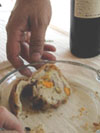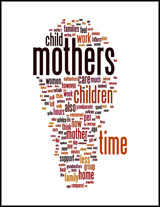The Tio Pepe Eating-In Report
Summary and conclusions
The dinner party is dead. Long live the dinner party!
Contrary to the professional pessimists who would have us believe that society is falling apart and that we are increasingly less sociable as a nation, eating together with friends at home is alive and well. All that has changed is that we no longer use the term 'dinner party' so much. It is a bit pretentious and conjures up images of the stiff, formal gatherings that are as now as dead as the hostess trolley. Instead, more relaxed more sociable gatherings continue the timeless rituals of sharing food and eating together — traditions that have been with us since the Stone Age.
Keep it causal
We can see these changes in the magazines devoted to informing us about what constitutes 'good taste' at any one point in time. The recipes and serving styles that were so fashionable in the 1970s would now seem very out of place in today's kitchens and dining areas. We no longer 'dress up' in the formal manner that was once required. Rarely do we encounter lead crystal glassware or silver serving spoons. Instead, however, we probably eat much better food and certainly drink much better wine.
As a nation we engage in over 300 million eating-in gatherings every year, with over half us playing host or guest every month or more often. The well-to-do among us tend to be the most frequent social diners, but many of those on relatively modest incomes are equally keen to have their friends around for a meal every few weeks or so. It may not be in a dining room as such — today's 'starter home' rarely comes so equipped — but with a Jamie Oliver or Nigella Lawson 'bible' to hand we can make up for that.
Keep it 'British'
While the hosts and hostesses of the 1970s and 80s sought to impress their guests with pastiches of French restaurant cuisine (rarely successfully) today's modern equivalent of the dinner party is more likely to feature 'good old' British fare — the roasts, stews and puddings that previous generations would have recognised as 'proper home' cooking. Equally, we are comfortable with proving classic Italian dishes — what could be simpler than boiling a pot of pasta and adding a jar of quality sauce — or Indian curries and tikka massalas, now almost redefined as British 'classics' themselves. French dishes, once so de rigeur at the dinner party qua dinner party, have now been relegated to sixth place in today's eating-in popularity.
Men in the kitchen
Another big change over the past few decades has been in the involvement of men in the preparation of food. In the 1970s their role was primarily that of meeters and greeters, pouring the drinks and, of course, carving the meat — that legacy of our hunter-gather past. Today, the meal is provided by the male half of the couple on almost 40% of occasions. A further 35% of men also claim to 'share' the cooking with their partners. Here, however, there might be a special interpretation of the word 'share'. Only 24% of women think that what men contribute constitutes 'sharing'.
This rise of the male home 'dinner party' cook is undoubtedly due in part to the advent of the TV chef. To cook is now to be trendy, even macho and 'pukkah'. And the recipes of the modern cook book, conveniently using ingredients to be found on the shelves of supermarkets that the authors themselves promote, are such that it doesn't matter if you never did home economics classes as a lad at school. They will work just fine.
Wine
In the 1970s the dinner party meal would most likely be accompanied by one, perhaps two, bottles of hock or generic claret. Today, much more attention is paid not only to the quality of the wine (today's stuff is infinitely more drinkable) but also to the known tastes of one's guests and the way it matches the food being served. The Australians played a big hand in demystifying wine in the 1980s, making it accessible to those who didn't know their white Burgundies from their Bordeaux blancs. The bottles simply said 'Chardonnay' or 'Sauvignon Blanc', which made life so much easier.
Today, of course, we are generally much more educated — just walking along the several hundred or so different wines in a single supermarket section bears witness to the increasing range and sophistication of our palates. And we have greater experience of travelling and eating in other European countries. We know that Italian wines are rarely now just 'plonk' and our increasing appetite for tapas — reflected in the expansion of chains such as La Tasca — has taught us that dry sherry is also a 'proper drink'.
Meal bonding
In an age when we seem to be obsessed about the dangers of 'junk food', the rise in the prevalence of obesity, food allergies and 'healthy eating', we might draw some comfort from the Tio Pepe Eating-In study. Food is not just about calories and nutritional value. The sharing of food among friends and eating together is an essential ingredient of our social and cultural well-being. We do not invite friends round to our home just to ensure that they don't go hungry. We eat with them because that is what we have done since our earliest ancestors realised that it served to establish and maintain the reciprocal bonds and loyalties that were essential to our cultural survival. In that sense, nothing has changed.
11.10.2006






